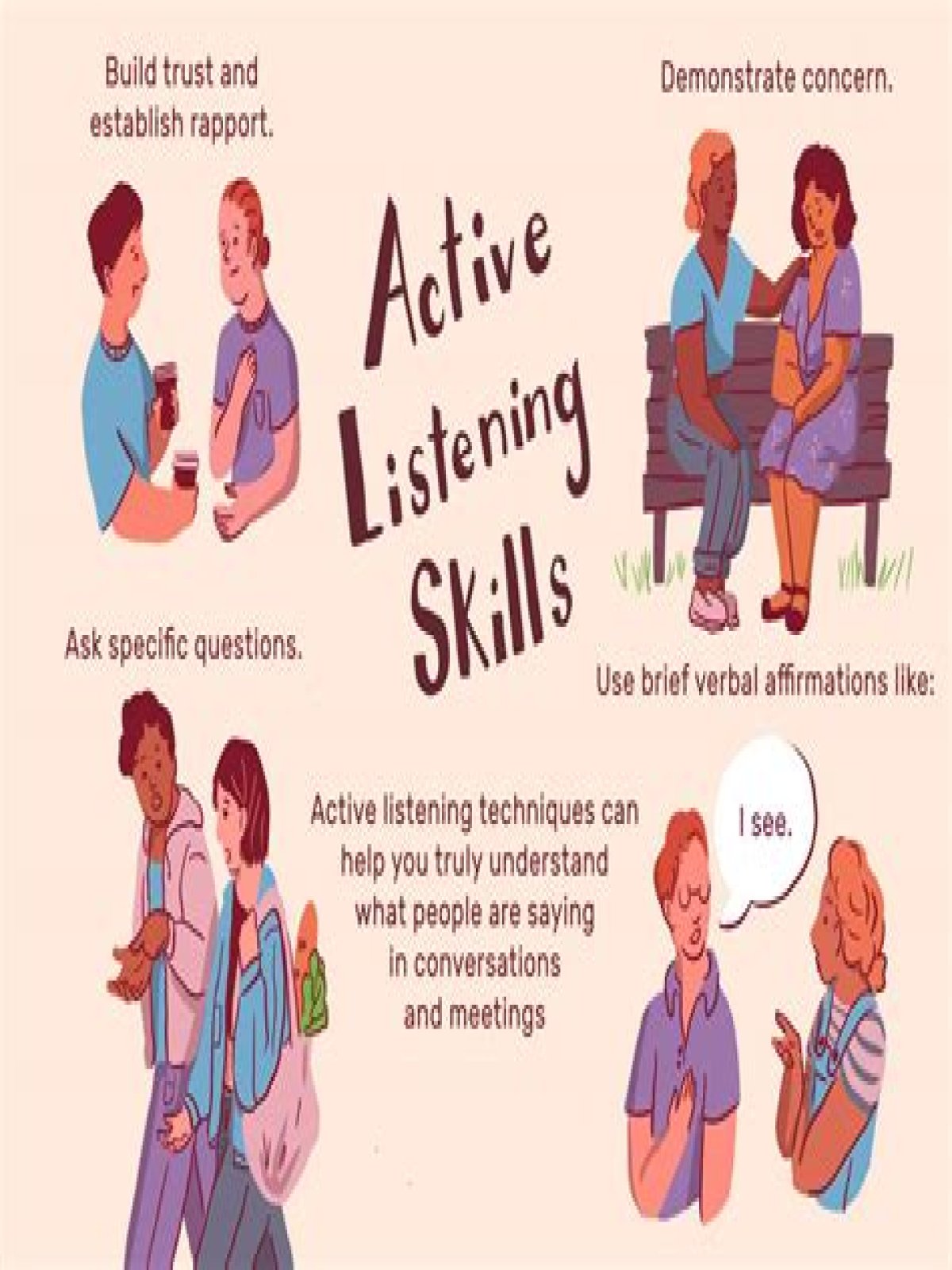Examples of Active Listening Techniques
- Building trust and establishing rapport.
- Demonstrating concern.
- Paraphrasing to show understanding.
- Using nonverbal cues which show understanding such as nodding, eye contact, and leaning forward.
- Brief verbal affirmations like “I see,” “I know,” “Sure,” “Thank you,” or “I understand”
How do you show someone you are actively listening?
10 tips for active listening
- Face the speaker and have eye contact.
- “Listen” to non-verbal cues too.
- Don’t interrupt.
- Listen without judging, or jumping to conclusions.
- Don’t start planning what to say next.
- Don’t impose your opinions or solutions.
- Stay focused.
- Ask questions.
What is active listening illustrate with examples?
Active listening definition Active listening requires the listener to fully concentrate, understand, respond and then remember what is being said. You make a conscious effort to hear and understand the complete message being spoken, rather than just passively hearing the message of the speaker.
What strategies can we use to listen actively?
There are five key active listening techniques you can use to help you become a more effective listener:
- Pay Attention. Give the speaker your undivided attention, and acknowledge the message.
- Show That You’re Listening.
- Provide Feedback.
- Defer Judgment.
- Respond Appropriately.
How do I make someone feel heard?
How to Make People FEEL SEEN AND HEARD
- Be Fully Present.
- Active Listening.
- Reflective Listening.
- Hold Space for Them.
- Offer Complete Non-Judgment.
- Validate Their Feelings.
- Listen Without Trying to “Fix”
- Remind Them How Much They Mean to You.
What is active listening skill?
Active listening is a skill that can be acquired and developed with practice. ‘Active listening’ means, as its name suggests, actively listening. That is fully concentrating on what is being said rather than just passively ‘hearing’ the message of the speaker. Active listening involves listening with all senses.
What are the two types of active listening?
The four types of active listening are paraphrasing, reflecting feelings, reflecting meaning and summative reflection.
- Paraphrasing. Paraphrasing occurs when the listener repeats the essence of the message spoken by the communicator but in different words.
- Reflecting Feelings.
- Reflecting Meaning.
- Summative Reflection.
How do you make someone feel loved?
- 10 Simple Ways to Make Someone Feel Loved and Appreciated.
- Tell them how they inspire you to be a better person.
- Recognize the qualities you admire about them.
- Remind them of how you feel in their presence.
- Tell them how you appreciate their presence in your life.
- Thank them for their willingness to be authentic.
Why do I never feel heard?
There are many reasons why you might not feel listened to – maybe your communication style isn’t compatible with other people’s, or maybe you’re unconsciously seeking more attention than the people around you can give. After that, focus on taking care of your emotional needs and sharpening your communication skills.
What do you call someone that doesn’t pay attention?
inattentive. adjective. not giving much attention to someone or something.
What are good listening skills?
In our experience, most people think good listening comes down to doing three things:
- Not talking when others are speaking.
- Letting others know you’re listening through facial expressions and verbal sounds (“Mmm-hmm”)
- Being able to repeat what others have said, practically word-for-word.
